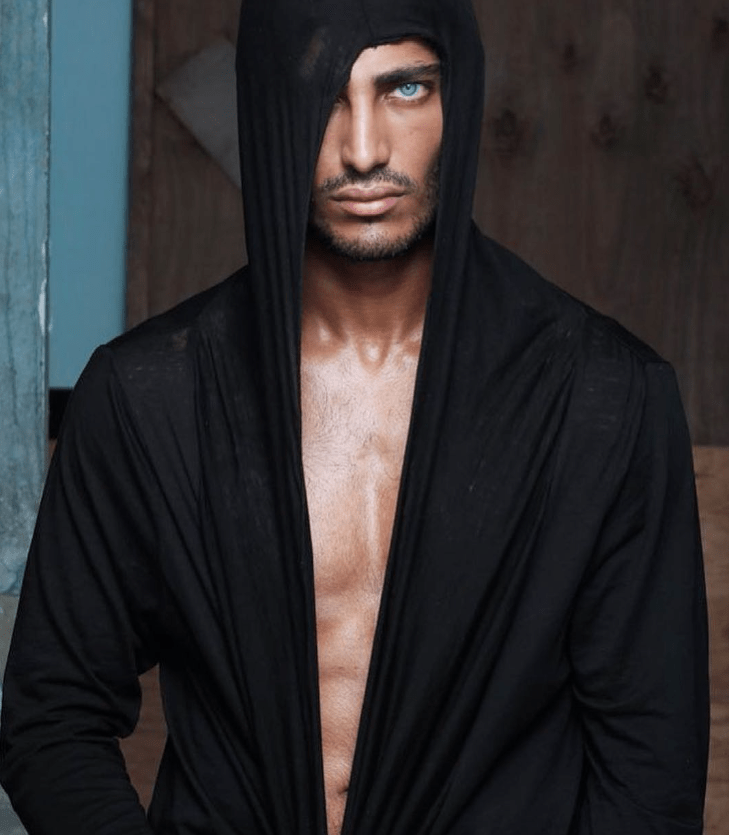
Aži Dahāka, also known as Zahhak or Dahāk, is a prominent figure in Persian mythology and folklore. He is depicted as a malevolent and monstrous figure, often associated with chaos, destruction, and the embodiment of evil. Aži Dahāka’s origins can be traced back to ancient Zoroastrian texts, particularly the Avesta.
According to mythology, Aži Dahāka was born as a result of a curse placed upon King Merdas by the evil spirit Angra Mainyu. As a child, he exhibited unnatural and sinister traits, and depicted as having two venomous serpents growing from his shoulders, three heads, and other serpent-like features symbolizing his corruption.



Aži Dahāka grew into a tyrant and a fearsome ruler of a kingdom known as Airyanem Vaejah (possibly ancient Iran) who sought to bring chaos and darkness to the world. He is said to have possessed supernatural powers, including the ability to shape-shift and control dragons. It is believed that he gained his power by making a pact with Angra Mainyu, which allowed him to rule for a thousand years.






Aži Dahāka ruled with an iron fist, subjecting his subjects to cruel and oppressive governance. His rule brought chaos, destruction, and suffering to the land, with tales of villages burned, crops destroyed, and people living in constant fear. To further his reign of terror, Aži Dahāka demanded the sacrifice of two young men every day to feed his serpents. He instilled fear and dread among the people, spreading devastation and destruction wherever he went. This reign of terror led to great suffering and anguish among the populace. Furthermore, he possessed the ability to control monstrous beasts known today as dragons. These mighty creatures served as his minions and aided him in his quest for power and destruction. With their assistance, he spread chaos and devastation across the land and none dared oppose him.
Aži Dahāka’s tyrannical rule eventually caught the attention of the hero Thraetaona (also known as Feridun in Persian folklore). Thraetaona, chosen by the supreme god Ahura Mazda, embarked on a quest to overthrow Aži Dahāka and bring peace to the kingdom. He possessed exceptional bravery, strength, and intelligence, making him the ideal champion against the forces of darkness.
After a series of fierce battles and challenges, Thraetaona managed to defeat Aži Dahāka. In some versions of the myth, Thraetaona binds Aži Dahāka with chains and imprisons him in a cave, effectively ending his reign of terror. It was said at the end of the Age, Aži Dahāka will break free of his bonds to ravage the world once again.



Reincarnations
His is a soul spun out by the wheel frequently. He is an agent of evil balancing the Pattern with darker threads. If there was an evil dark equivalent of the Heroes of the Horn, he would be one. Instead, he is often spun out opposite a great hero and usually perishes at their hand. As a soul, he is strongly inclined toward evil, and his legends are usually retold as the deeds of some sort of serpent, dragon or demon.
2nd Age – He would have been a contributor to the Collapse, the hundred years prior to the War of Shadow broke when society became sick and twisted. He ran the gladiatorial rings that saw people fight to the death, usually profiting off the money earned. If he survives long enough, he would have joined the Shadow in the war.
3rd Age – A darkfriend loyal to the Dreadlord Arikan who survives the persecution of Arikan’s followers after the defeat at Tar Valon.
4th Age – This would be the rebirth in which he is at his most powerful. A channeler serving the Emperor of Seanchan, his name goes down in legend as a demon that inspires future Hebrew mythologies of the following Ages. He was depicted with a lion’s head and a serpentine body with eagle wings.
5th Age – Aži Dahāka (Persian), depicted as a three-headed dragon with a body filled with lizards and snakes that could infect the world when released, and wings that can darken the skies when fully spread. He was a servant of Ahriman, the father of lies and personification of evil in Persian mythology.
6th Age – Jörmungandr, the Norse World Serpent. He spends most of his life circling and terrorising other societies around the world, giving rise to many legends of monsters and the heroes responsible for their defeat, before ultimately returning to Asgard and fulfilling his role at Ragnarök.
7th Age – Beowulf’s Bane (Germanic). He is the final enemy of the hero, Beowulf and described as a nocturnal, treasure-hoarding, inquisitive, vengeful, fire-breathing creature that mortally wounds Beowulf just before being slain himself.
0 Comments